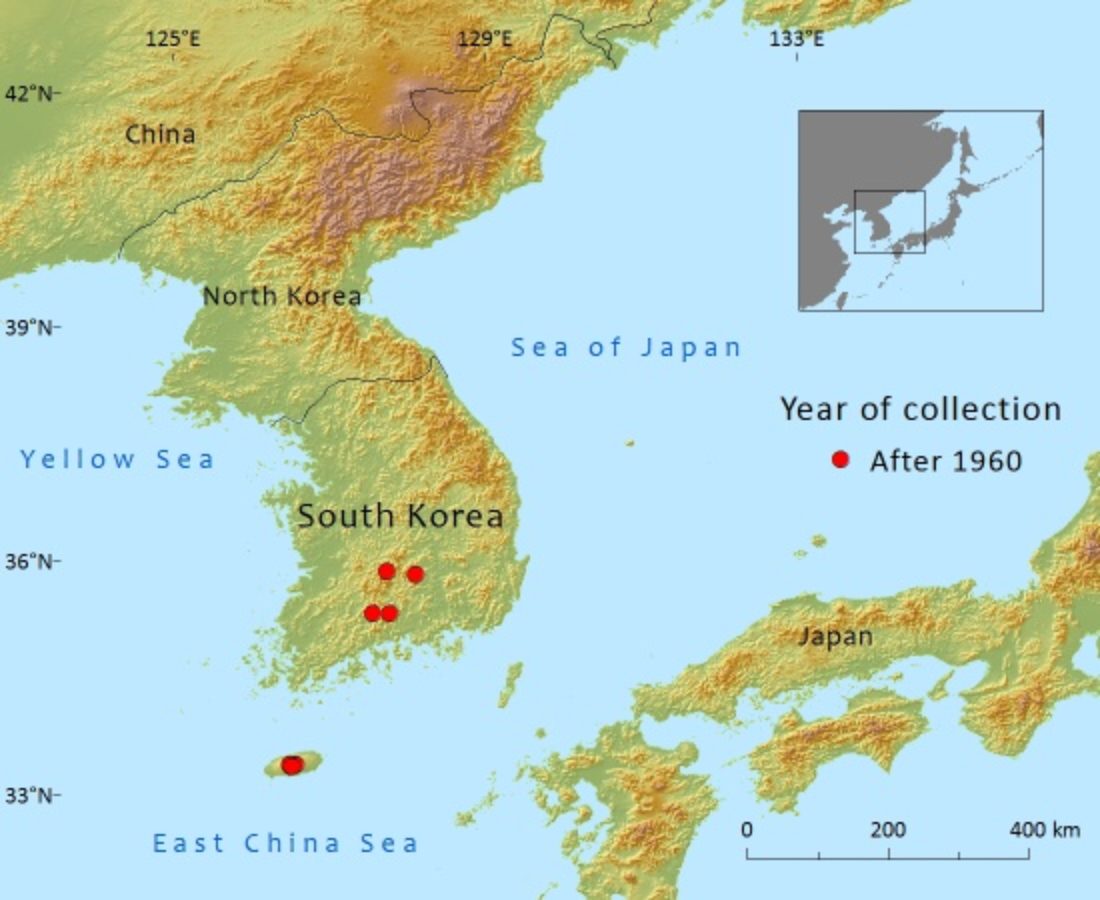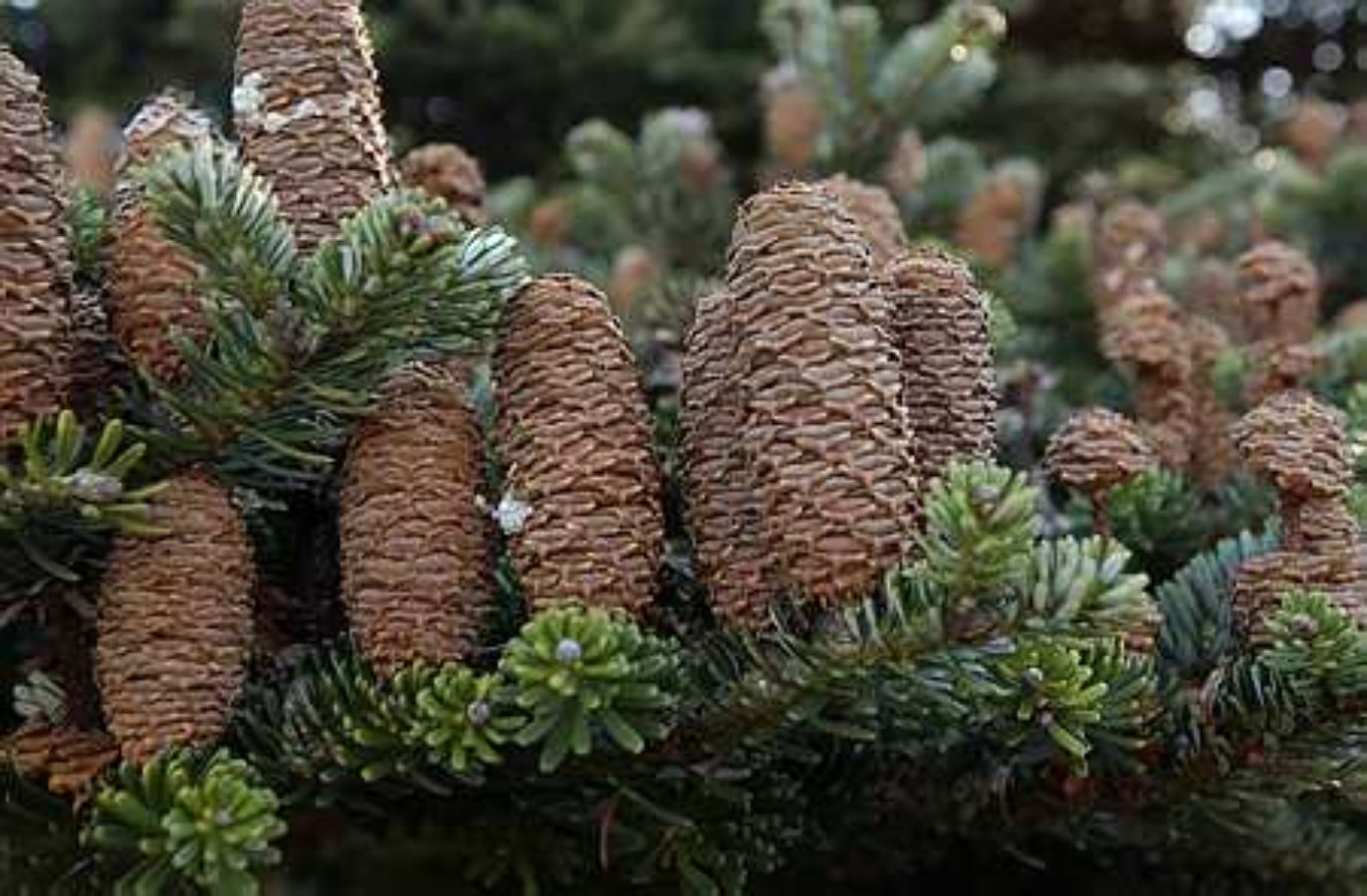Pinaceae
Abies koreana
Endemic to four mountains in South Korea, the population suffers a range of threats including climate change, introduced pathogens and invasive native and non-native plants
References and further reading
- Cho, H.K., Miyamoto, T., Takahashi, K., Kim, D.S., Hong, S.G. & Kim, J.J. (2005). First report on Racodium therryanum associated with seed infection of Abies koreana in Korea. Journal of Plant Pathology 21(3): 297–300.
- Cho, H., Miyamoto, T., Takahashi, K., Hong, S. & Kim, J. (2007). Damage to Abies koreana seeds by soil-borne fungi on Mount Halla, Korea. Canadian Journal of Forest Research 367(2): 371–382.
- Kim, G.T. & Choo, G.C. (2000). Comparison of growth condition of Abies koreana Wilson by districts. Korean Journal of Environmental Ecology 14: 80–87.
- Kim, G.T., Choo, G.C. & Baek, G.J. (1998). Studies on the structure of forest community in subalpine zone of Mt. Halla Abies koreana forest. [In Korean with English summary]. Journal of Korean Forestry Society 87: 366–371.
- Kim, G.T., Choo, G.C. & Um, T.W. (1997). Studies on the structure of Abies koreana Community at Subalpine Zone in Hallasan. Korean Journal of Environmental Ecology 21(2): 161–167.
- Kim, S.D. & Yoon, W.S. (1991). Regeneration process of Abies koreana forest in Banya, Mt Jiri. Research Reports of Environmental Science Technology Chungnam National University 9: 97–106.
- Kim, Y.-S., Chang, C.-S., Kim, C.-S. & Gardner, M. (2011). Abies koreana. In: IUCN 2012. IUCN Red List of Threatened Species. Version 2012.2. . Downloaded on 11 November 2012.
- Korea National Arboretum. (2009). Rare Plants Data Book of Korea. Korea National Arboretum.
- Lee, C.S. & Cho, H.J. (1993). Structure and dynamics of Abies koreana Wilson community in Mt Gaya. Korean Journal of Ecology 16(1): 75–91.
- Lee, Y.W. & Hong, S.C. (1995). Ecological studies on the vegetational characteristics of the Abies koreana forest. Journal of the Korean Forestry Society [In Korean with English summary.] 84: 247–257.
- Oh, K.K., Jee,Y. & Park, S.G. (2000). Dynamic patterns of Abies koreana population in Chirisan National Park: central of east area in Chirisan National Park. Korean Journal of Environmental Ecology 13(4): 330–339.
- Woo, S.Y. (2009). Forest decline of the world: A linkage with air pollution and global warming. African Journal of Biotechnology 8(25): 7409–7414.
- Woo, S.Y., Lim, J.W. & Lee, D.K. (2008). Effects of temperature on photosynthetic rates in Korean Fir (Abies koreana) between healthy and dieback population. Journal of Integrative Plant Biology 50(2): 129–152.



